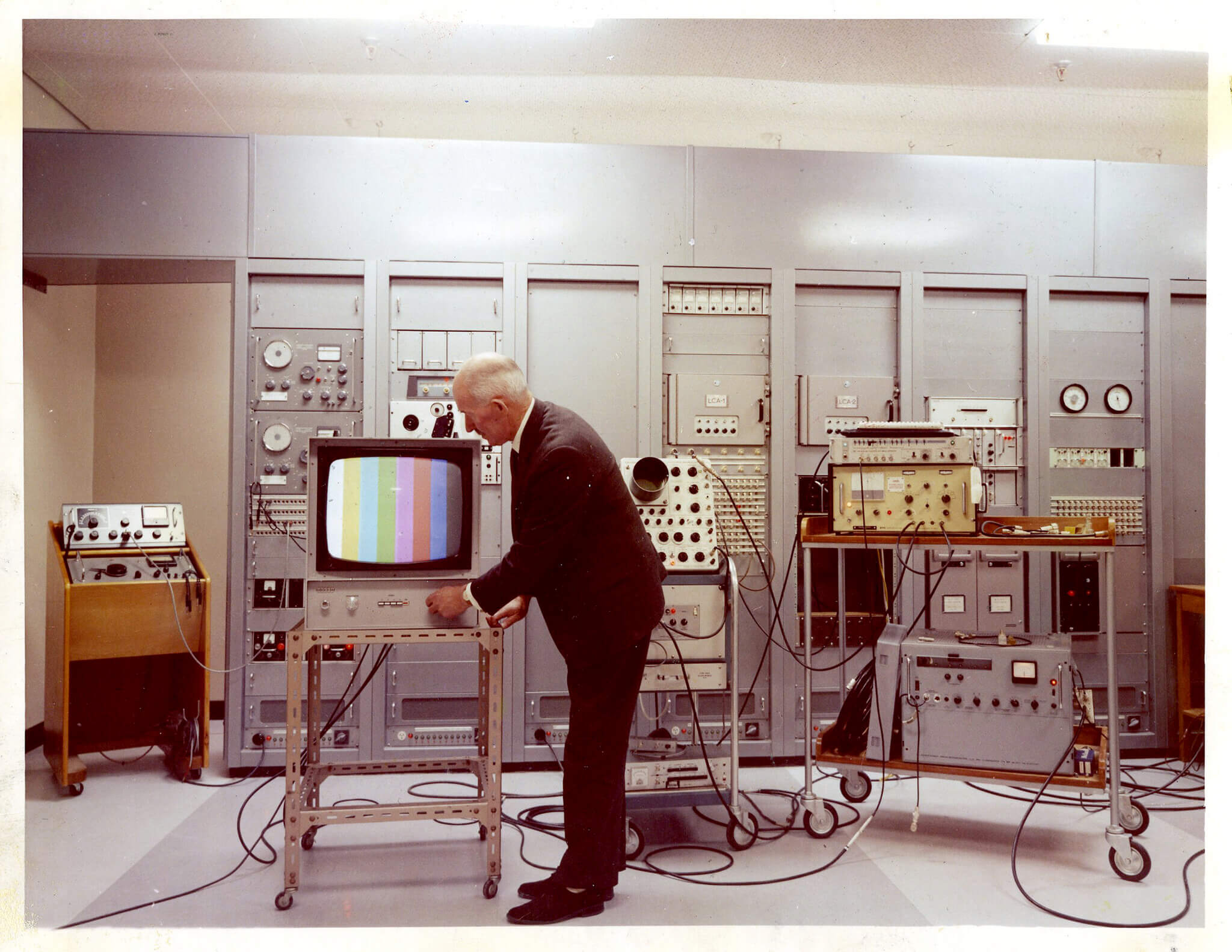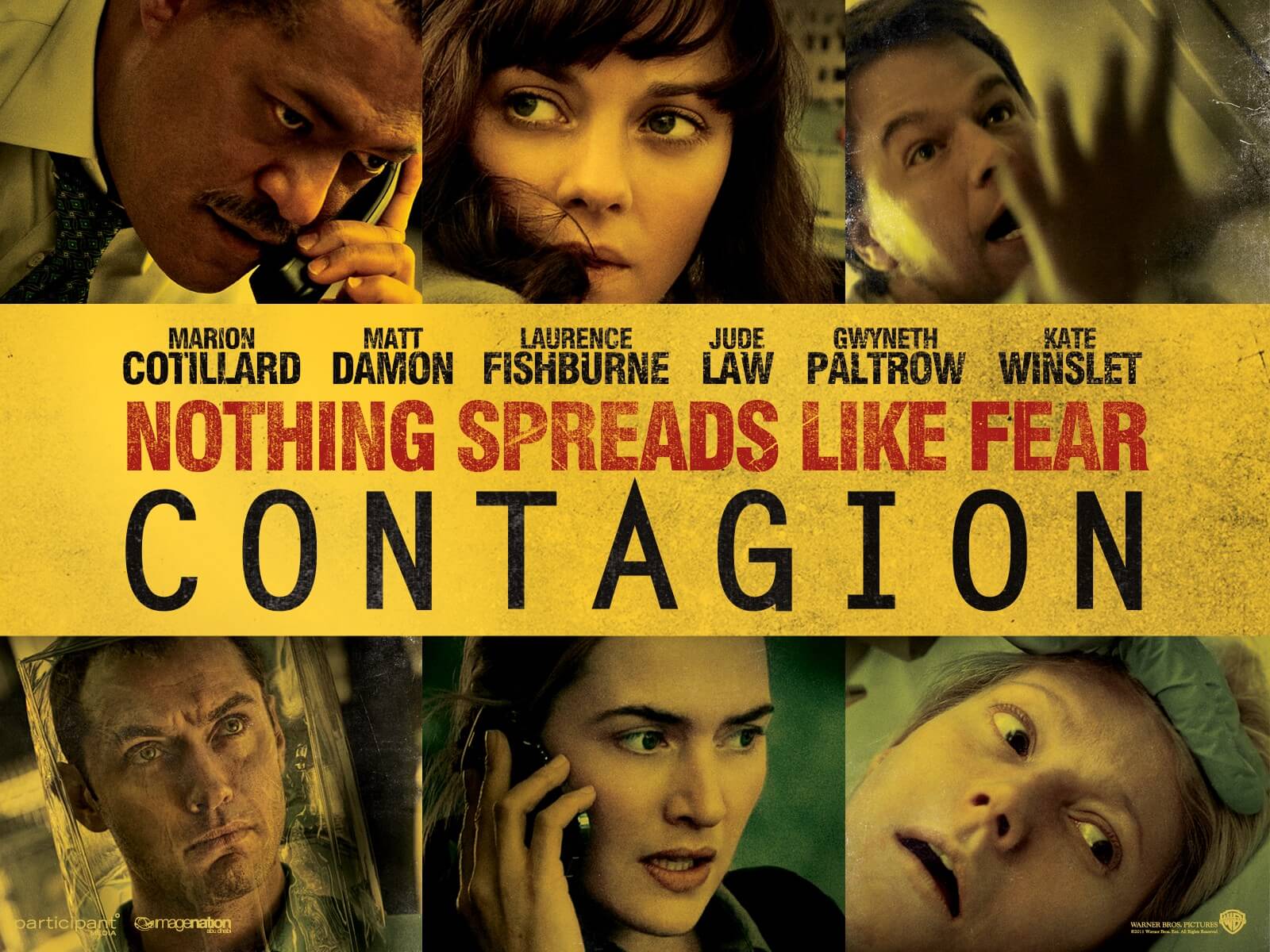
Why science fiction films help us study the future

Universities and think tanks have always been skilled at archiving the past and analysing the present. But what about the future? Why were we so unprepared for the COVID-19 pandemic? And how will new technologies – ranging from artificial intelligence and robotics to so-called ‘human augmentation’ – impact our societies? In this first contribution of our new topic ‘Tomorrow’s Worlds’, Etienne F. Augé argues that science fiction is a valuable source of inspiration for political analysts offering us a better grip on the future.
In the West, most of us are used to a comfortable lifestyle. We can plan ahead due to good health care, a decent pension, and an overall feeling of security. This bubble of safety is sometimes punctured by a crisis, from terrorist attacks to a global pandemic or rumours of a war against China.
Even though Western governments are better prepared for crises than their counterparts in less developed countries, they remain taken by surprise when the next ‘unforeseen’ crisis hits them. One reason is that governments as well as ordinary citizens are faced with an exponential amount of data.1 Distinguishing between relevant and irrelevant factors and developments becomes harder by the day. Our world has moved from ‘big data’ to ‘impossible-to-handle data’.
Even ambitious projects from well-funded organisations, like Global Trends 2040 of the American National Intelligence Council2 , often tend to be wrong about their predictions of the future, and are usually rather vague about them. Other well-known initiatives such as Shell’s future scenarios3 , tend to be off the mark for the simple reason that this powerful Anglo-Dutch oil company simply cannot imagine a future where they themselves would become marginalised.
It is difficult to blame these organisations as predicting the future remains a nigh impossible task
There are numerous reasons why such large, powerful companies like Shell fail to predict the future with some accuracy. One obvious reason is groupthink, a psychological phenomenon that pushes a group to find consensus rather than examine daring ideas. Another could be vested interest, since thinking ‘outside the box’ and imagining a future without Shell is a real career killer for any Shell-employee. A last reason could simply be a lack of imagination, as relying on trends alone often results in tunnel vision, which certainly clouds a clear vision of the future.
It is difficult to blame these organisations as predicting the future remains a nigh impossible task. There are numerous past forecasts that got it notoriously wrong. Orrin E. Dunlap Jr. from The New York Times did not see a future for television in 1939, as the “problem with television is that the people must sit and keep their eyes glued on a screen; the average American family hasn’t time for it”.4 Thomas Watson, chairman of IBM, announced in 1943 that there may be “a world market for maybe five computers”.5 And Steve Ballmer, former CEO of Microsoft, famously laughed at the iPhone in 2007, seeing no future in it.6

Futures Studies: a new idea?
Despite the many mishaps, it is of course possible to think about the future and design desirable futures – often on the basis of different scenarios. So-called ‘Futures Studies’ have developed extensive methodologies to do exactly that, and a host of futurists are working fulltime around the globe imagining our future, providing scenarios to make humanity better prepared and more resilient to change.
This is hardly a novel idea. As early as 1932, one of the founding parents of science fiction, British author H.G. Wells, broadcast on the BBC a short plea entitled ‘Wanted – Professors of Foresight!’ He remarked: “It seems an odd thing to me that though we have thousands and thousands of professors and hundreds of thousands of students of history working upon the records of the past, there is not a single person anywhere who makes a whole-time job of estimating the future consequences of new inventions and new devices. There is not a single Professor of Foresight in the world. But why shouldn't there be?”7
It took some time before Wells’ advice was followed. Studying the future has only become part of academic research and teaching since the 1960s. During all phases of the Cold War, strategic planning – including playing so-called ‘War games’ – was considered essential to prepare for an uncertain future.
For Western governments, it became existential to imagine how new technologies – ranging from satellites to computers, and from television to the internet – would affect their prosperity and security
In 1964 the US-based RAND Corporation famously published the Report on a Long-Range Forecasting Study, stating: “The fact remains, however, for better or for worse, trend predictions – implicit or explicit, ‘scientific’ or intuitive – about periods as far as twenty or even fifty years in the future do affect current planning decisions (or lack of the same) in such areas as national defense, urban renewal, resource development, etc.”8
Thinking about the future was not just a frivolous exercise. For Western governments, it became existential to imagine how new technologies – ranging from satellites to computers, and from television to the internet – would affect their prosperity and security.9 Futures Studies were called upon not only to predict crises, but also to imagine and design better policies concerning all societal sectors, from defence to energy, from education to food, and from supply chains to geopolitics.
Stimulating imagination
What remains surprising is that many experts working in Futures Studies hardly watch science fiction, let alone read it. Most experts dismiss the genre as unserious, a teenage distraction at best. According to its critics, science fiction is barely science, and usually involves poor writing.

This bad reputation is largely undeserved and science fiction is often misunderstood. Though there certainly is plenty ‘cheap’ science fiction, some authors have had a lasting impact on societies – think about Isaac Asimov’s ideas on robotics, Philip K. Dick on philosophy, or Frank Herbert on ecology. The list is impressive, and way too long for a single article. Science fiction has had a major impact on our societies, mainly because it has constantly reinvented itself.
Science fiction is hard to define. One of its best writers, Norman Spinrad, claimed “science fiction is anything published as science fiction”.10 This generous definition would also include famous mainstream authors into the category of science fiction. George Orwell’s 1984 is a classic work of fiction, but rarely recognised as science fiction, although Orwell imagines a future dystopia for a reason, namely to avoid it.
The category or term science fiction has become a bit of a misnomer. Science was indeed the focus when science fiction started off with authors like Mary Shelley, Jules Verne, and Wells. Today, the element of science is of decreasing importance to the genre, since it has become clear that technology is hardly the answer to all human problems. Since the 1950s, the focus of science fiction is on possible future social change, rather than technology per se. Clearly, authors have drawn lessons from Auschwitz and Hiroshima: science and technology in the wrong hands could well mean the end of humanity.
Modern science fiction trends like hopepunk11 barely make use of technology for their stories, where steampunk – another major trend in science fiction – even creates a uchronia (an idealised or fictional conception of a particular period of time, especially in the past)12 where steam power has again become the main source of energy. The Handmaid's Tale, currently a popular TV show initially based on Margaret Atwood’s novel, also imagines a future world centred around technological regression rather than scientific progress.13

Science fiction as a source of inspiration
Science fiction can be a remarkable source of inspiration for Futures Studies as it continually asks the question: what if? The genre can also be used as a sandbox to turn over new ideas, since one of the main purposes of the genre is to discover and invent.
‘What if cars could fly?’ is a trope in science fiction, but science fiction goes much deeper and questions present societal models by imagining alternative ones. What if women and men were equal in rights? What if earth was not the centre of the universe and aliens really exist? What if artificial intelligence could help us overcome issues such inequality or misinformation? The list is endless, or only limited by our imagination.
The global pandemic we are living through today, has been the topic of many works of science fiction
Science fiction can also be used to prevent the worst from happening, by presenting possible future challenges and problems that today’s policymakers decide to ignore, often for lack of a long-term vision. The global pandemic we are living through today, has been the topic of many works of science fiction: I am Legend in 1954, that inspired three later film adaptations; 12 Monkeys (1995); and more recently the movie Contagion (2011, by Steven Soderbergh14 ).
The rise of robots is another favourite topic among science fiction writers and is becoming dangerously close to reality since drones may have attacked humans fully autonomously for the first time in 2021.15 Another classic science fiction theme is the end of the world, though the main difference with religious prophecies is we can avoid doom by reacting soon enough, redemption not being provided by a megalomaniac deity but by societies changing together. Hopefully.
Due to its spectacular and imaginative qualities, science fiction is Hollywood’s most profitable genre. Today, science fiction movies and television shows comprise about one third of all Netflix productions.

Both the US army16 and the French military17 are using the power of science fiction to get better prepared for future conflicts or crises. For modern armies, it is crucial to be able to anticipate how terrorism or guerrilla warfare might evolve, and science fiction writers are able to provide possible scenarios for future conflicts.
Science fiction is also a major source of inspiration for Silicon Valley’s high-tech companies. Would the ‘metaverse’18 envisioned by the company formerly known as Facebook exist without a description of the next frontier in Neal Stephenson’s Snow Crash? Even in Stephenson’s novel, the metaverse is owned and controlled by a giant corporation known as the Global Multimedia Protocol Group. This tends to show that science fiction has a major power to make things happen through self-fulfilling prophecies – for better or for worse.
Autocratic states like the People’s Republic of China and the Kingdom of Saudi Arabia are also embracing the power of the genre, after initially having strongly rejected science fiction. Recently, Saudi Arabia has commissioned the public relations firm Ruder Finn to promote ‘Neom’, the Saudi mega-city of the future inspired by science fiction.19
It seems today that controlling the future contributes to controlling the present, as more and more entities embrace the power of science fiction to literally capture imagination
Neom is pitched as a city of the future based on “sustainable living” and “focused on setting new standards for community health, environmental protection, and the effective and productive use of technology”, at an initial 500 billion US dollars. Interestingly, Saudi Arabia now brands itself as a future oriented country, sponsoring the UNESCO Future Literacy Summit in 202020 and hosting the 2022 World Science Fiction Convention.
The People’s Republic of China has decided to actively encourage science fiction writing ever since they realised that most Silicon Valley inventors and designers were avid science fiction fans, as Neil Gaiman explained in a wonderful conversation with Kazuo Ishiguro.21 Since the Chinese government remains keen on its control over its citizens, special guidelines have been issued to make sure China is depicted in the best way possible.22
“Who controls the past controls the future: who controls the present controls the past”, George Orwell famously claimed in his 1984. It seems today that controlling the future contributes to controlling the present, as more and more entities embrace the power of science fiction to literally capture imagination.

Using science fiction
Science fiction can still be used for the greater good. Combining scientific methods with the capacity of stimulating imagination from science fiction can lead to a powerful tool to anticipate the future, or make it happen. For that reason, science fiction has become ‘trendy’ as organisations understand that, beyond Futures Studies, there should also be a narrative motivating societies to embrace change.
Even the United Nations, usually cautious about innovation, has decided to make use of science fiction as an inspiration for its mission, challenging so-called dystopia with better futures imagined with science fiction.23 For now, the European Union remains hesitant to follow the UN’s example. Science fiction could nevertheless help the EU tremendously by creating inclusive scenarios for desirable futures, reducing declinism and limiting fears of tomorrow.
There is a long road before academia incorporates Futures Studies as part of all curricula, but we better start today than tomorrow
The time might therefore be ripe for giving voice to a new kind of expert who is able to combine ‘traditional’ Futures Studies methodology with storytelling skills to lead societies away from doomsday-thinking. A prime example of such an initiative can be found in Arizona State University (AZU), where the Center for Science and the Imagination collaborates with established science fiction writers like Kim Stanley Robinson, but also with up and coming authors to imagine better futures.24
In 2015, inspired by AZU, Erasmus University Rotterdam established the special program called ‘The Consortium’ aimed to combine university-based research skills and creativity, academia and the ‘real world’, and bright students and experienced professionals – all geared towards generating scenarios for the future; hopefully desirable ones. In a world where neither Francis Fukuyama nor Samuel P. Huntington have been right about their vision of the world of the future, we believed it was high time to train our students to design the future they want and be ready for unplanned catastrophic scenarios.
There is a long road before academia incorporates Futures Studies as part of all curricula, but we better start today than tomorrow. As Wells warned us in 1932: “Because if it is not to be peace foreseen and planned and established, then it will be disaster and death. Will there be no Foresight until those bombs begin to rain upon us?”7
11 science fiction movie recommendations:
- The future of Overcapitalism: Metropolis (1927)
- The future of Humanity: 2001: a Space Odyssey (1968)
- The future of the Universe: Solaris (1972)
- The future of Humans: Blade Runner (1982)
- The future of Society: Minority Report (2002)
- The future of our moon: Moon (2009)
- The present of robots: Animatrix (2013)
- The future of Time: Predestination (2014)
- No future: Mad Max: Fury Road (2015)
- The future of Earth: Aniara (2018)
- The future of Space: Ad Astra (2019)
- 1According to the World Economic Forum, the entire digital universe was around 44 zettabytes in 2020, which translates into 44.000.000.000.000.000.000.000 bytes. By 2025, 463 exabytes of data will be created each day globally, or 463.000.000.000.000.000.000 bytes.
- 2‘Global trends 2040’, Office of the Director of National Intelligence, March 2021.
- 3‘Shell scenarios’, Shell, n.d.
- 4Orrin E. Dunlap Jr, ‘Act I, Scene I: Telecasts to Homes Begin on April 30—World’s Fair Will Be the Stage’, The New York Times, 7 December 1939.
- 5Lawrence Wintermeyer, ‘Ten Years Of Fintech Megatrends For The Next Decade’, Forbes, 26 December 2019.
- 6‘Ballmer laughs at iPhone’, Youtube, 18 September 2007.
- 7 a b Herbert George Wells, ‘Communications 1922-1932 - HG Wells’, BBC Archive, 19 November 1932.
- 8Theodore J. Gordon, Olaf Helmer-Hirschberg, ‘Report on a Long-Range Forecasting Study’, RAND corporation, 1964.
- 9As a result, it is now possible to take Futures Studies at the University of Houston, Stellenbosch in South Africa, or the Freie Universität in Berlin, just to name a few. More recently Erasmus University in Rotterdam (EUR) has launched a new initiative in Futures Studies, continuing the legacy of Frederik Polak, EUR professor of sociology and widely considered one of the Dutch pioneers of Futures Studies.
- 10Norman Spinrad, ‘Modern Science Fiction’, New York: Anchor, 1 January 1974.
- 11‘Hopepunk, the latest storytelling trend, is all about weaponized optimism’, VOX, 27 December 2018.
- 12‘Uchronia’, n.d.
- 13‘The Handmaid's Tale’, Brittanica, n.d.
- 14Steven Soderbergh, ‘Contagion’, Youtube, 14 July 2011.
- 15‘Drones may have attacked humans fully autonomously for the first time’, NewScientist, 27 May 2021.
- 16Will Slocombe, ‘Militaries plunder science fiction for technology ideas, but turn a blind eye to the genre’s social commentary’, The Conversation, 26 July 2021.
- 17Andrew Liptak, ‘The French Army is hiring science fiction writers to imagine future threats’, The Verge, 24 July 2019.
- 18‘Connect 2021: Our vision for the metaverse’, Tech@Facebook, 28 October 2021.
- 19Kevin McCauley, ‘Ruder Finn Inks $1.7M Social Media Pact for Saudi Mega-City’, Odwyer’s, 24 June 2020.
- 20‘Futures Literacy - The Summit 2020’, UNESCO, 19 April 2021.
- 21‘“Let’s talk about genre”: Neil Gaiman and Kazuo Ishiguro in conversation’, The New Statesman, 4 June 2015.
- 22The number one priority is to “thoroughly study and implement Xi Jinping Thought.” Based on the Chinese president’s past pronouncements on film work, filmmakers should follow the “correct direction” for the development of sci-fi movies. This includes creating films that “highlight Chinese values, inherit Chinese culture and aesthetics, cultivate contemporary Chinese innovation” as well as “disseminate scientific thought” and “raise the spirit of scientists.” Chinese sci-fi films should thus portray China in a positive light as a technologically advanced nation. See Rebecca Davis, ‘China Issues Guidelines on Developing a Sci-Fi Film Sector’, Variety, 17 Augustus 2020.
- 23‘How to draw the future (and re-imagine peace)’ , Medium, 3 September 2020.
- 24Center for Science and the Imagination, Arizona State University, n.d.




1 Reacties
Load comments
Science Fiction
I agree with you. Design programs does this to a limited degree.
Reactie toevoegen